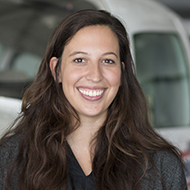Human factors engineer
Improving performance and safety through design

Adam Lary was always interested in human factors. After college, 10 years in the U.S. Army, and as human factors researcher, he joined Garmin as a HF engineer, and now leads a team working on Garmin’s latest developments.
“I like to describe it simply designing systems and products to be user friendly. We aim to develop avionics pilot interfaces that are safe, effective, efficient, and enjoyable for pilots to use,” he says. “Our going-in assumption is that there is no such thing as user error, only ineffective design, so the responsibility is really on us to make it great.”
Human factors engineers blend psychology and the way humans physically and cognitively interact and process the world around them to help optimize performance. They make the environment (the flight deck and other tools we use) fit the human’s strengths, resulting in design that enhances performance and makes us safer.
“Doing this effectively requires a broad range of knowledge about how humans perceive, process, plan, and act on information and stimuli in their environment,” says Lary. “A concrete example is designing cockpit alerts for attention-getting qualities. The human eye is more sensitive to motion and picking out differences in scenery, which is why red or amber are mostly reserved for warning and caution alerts. The alerts are usually accompanied by flashes and are generally located in or near the primary field of view. It’s all to make sure we capture the pilot’s attention when it’s needed.”
One of Garmin’s most impressive recent applications of human-centered design is its G3000 Prime avionics interface, which Lary says the team had been working on since 2017, and he had been working on since he joined the team in 2021. It’s also the project he’s most proud of.
“I hit the ground running with this project when I joined Garmin, immediately diving into prototyping portions of the user interface using tools like Adobe XD and then Figma. But the real bread and butter of it was conducting full flight scenario evaluations in our flight simulator labs during various development stages. Then evolve it into what you see now, which we are extremely proud and excited about.”



